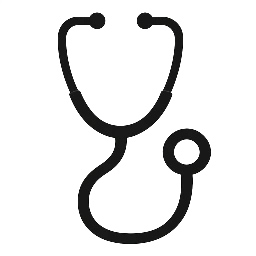PCN 500 Grand Canyon Week 4 Discussion 1
What types of populations and diagnostic mental health categories would be most inclined to use REBT and behavioral theories? Why?
ADDITIONAL INFORMATION
REBT and behavioral theories
Introduction
REBT is a cognitive-behavioral therapy (CBT) that focuses on helping people change their maladaptive ways of thinking and behaving. The theory behind REBT is that we can actually change the way we think about things by changing our emotions. In other words, it is not events themselves but rather our interpretations and perceptions of those events that lead to emotional distress.
Cognitive behavioral theories assert that human beings can actually change the way that they think.
Cognitive behavioral therapy (CBT) is a type of therapy that relies on the idea that human beings can actually change the way that they think. It’s based on the idea that people can learn to adopt new ways of thinking and behaving, even when those changes seem difficult or impossible at first.
The underlying principle behind CBT is known as “cognitive restructuring”; this refers to trying to identify why someone believes something negative about themselves or their life in order to change it.
REBT is a strong example of cognitive behavioral theory.
REBT is a form of CBT, which stands for cognitive behavioral therapy. It’s based on the premise that people can change their thinking and behavior. In other words, it helps people identify and change self-defeating beliefs (like “I’m not good enough”) that lead to emotional distress (e.g., depression or anxiety).
REBT’s central premise is that it is not events themselves but rather our perceptions and interpretations of those events that lead to emotional distress.
REBT’s central premise is that it is not events themselves but rather our perceptions and interpretations of those events that lead to emotional distress. REBT was developed by Albert Ellis, a psychologist who was influenced by Freud, but disagreed with Freud’s ideas about the unconscious.
REBT emphasizes learning more effective ways of thinking and acting in order to improve your life. It does this through helping you identify what brings you pleasure or pain (your core beliefs), then teaches you how to challenge those beliefs so they can change for the better (cognitive restructuring).
REBT provides clear steps for helping people change their thinking to reduce emotional upset.
REBT is a psychological therapy that helps people identify and change their irrational beliefs. It’s based on the idea that we don’t reason with our emotions, but rather they reason with us. When you’re upset or angry, your brain makes automatic judgments about why you feel this way and then comes up with a belief that justifies it. In other words: “I’m annoyed because my friend didn’t invite me to her party.”
REBT asks questions like: If this were true (i.e., if I really believed my friend was really mean), then why wouldn’t she have invited me? Or if it were true (i.e., if I really believed the world would end tomorrow), then why wouldn’t everyone be worried about it? These questions force us into an investigation of our irrational thinking so we can uncover its inconsistencies and find ways around them—like asking yourself why not everyone would be worried about the impending apocalypse if indeed there is one coming!
Once you’ve identified an irrational belief as being problematic for your life in general and/or specific situations involving others around you who are important to you personally , challenge it by questioning how well-founded these thoughts are when compared against reality . For example: “Wouldn’t everyone else simply ignore me anyway?” Or: “Wouldn’t someone recognize how much better off my life would be without worrying constantly about whether she’ll ever meet anyone else?”
Cognitive behavioral theories (including REBT) have a strong evidence base supporting their effectiveness in helping people overcome emotional problems and live better lives.
Cognitive behavioral theories (including REBT) have a strong evidence base supporting their effectiveness in helping people overcome emotional problems and live better lives.
The goal of CBT is to help people change their thinking to reduce emotional problems. CBT has been shown to be effective in treating a wide range of emotional problems, including depression, anxiety disorders, eating disorders, personality disorders and other mental health conditions.
Conclusion
REBT is a great example of cognitive behavioral theory. REBT’s central premise is that it is not events themselves but rather our perceptions and interpretations of those events that lead to emotional distress. REBT provides clear steps for helping people change their thinking to reduce emotional upset. In addition, these theories have strong evidence bases supporting their effectiveness in helping people overcome emotional problems and live better lives.

Leave a Reply